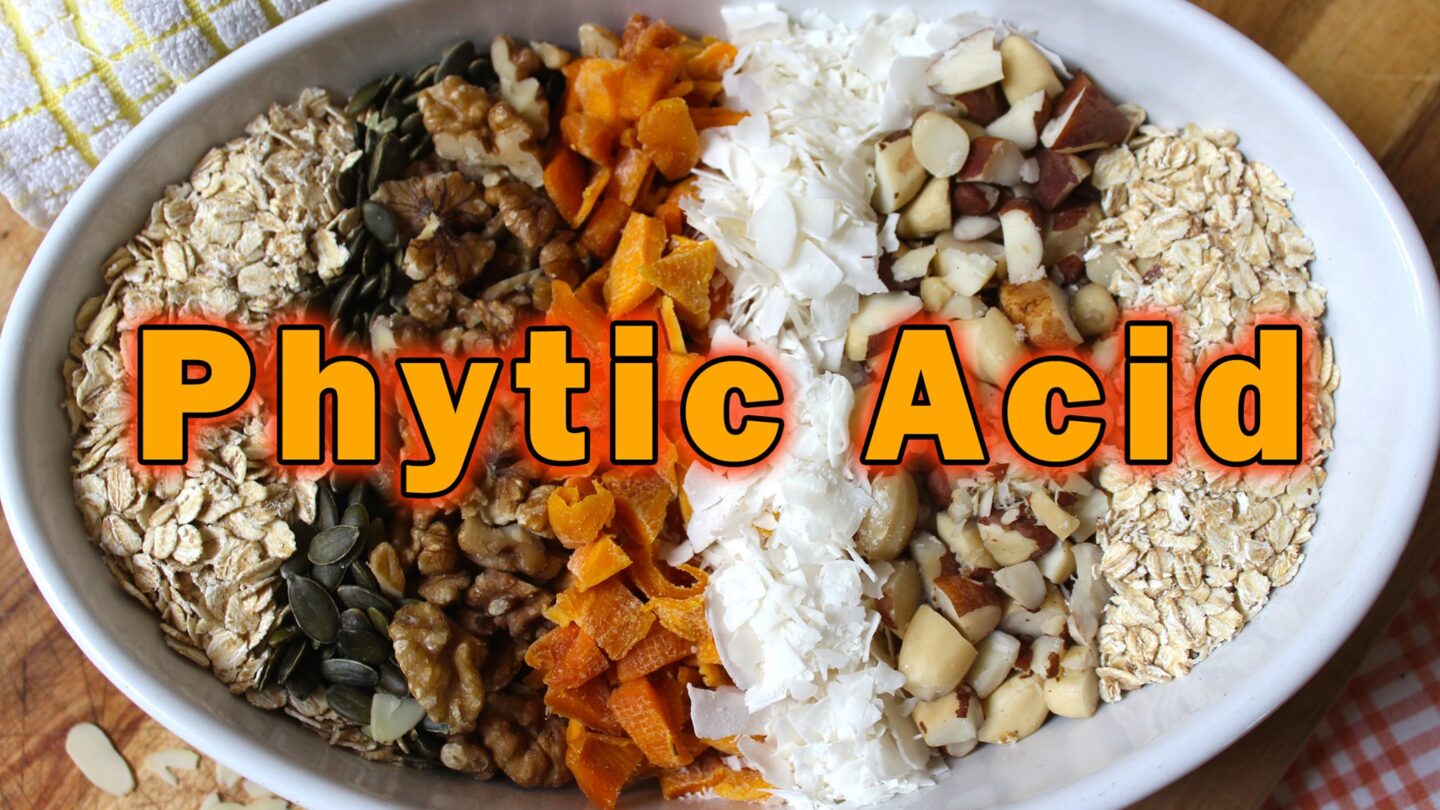In this part of covering all the toxic plant chemicals, we will look at phytic acid; one of the few antinutrients that at least some people actually know exists. While it fades in comparison with some other plant defense toxins, it’s still a very serious and dangerous one.
As with all antinutrients, they are simply chemicals that bind to nutrients that the plant, or seed, need in order to grow. Phytic acid is no different. It has one simple task; to hold on (as a chelator) to some specific essential minerals that the plant needs.
While ruminants like cows and sheep can break down phytic acid, humans cannot. If a human comes along and thinks that he can eat that plant to get the nutrients, the phytic acid will bind to minerals like phosphorus, iron, zinc, magnesium, and calcium and prevent absorption of all these. Other antinutrients will also bind to these minerals, and many other nutrients. That is their function – to bind and chelate nutrients into a form that the plant can use and we cannot.
This is the main reason why plant-foods are useless as nourishment, the bioavailability, that is, what we can absorb and use, is abysmal!
And even if some of the minerals can make it through our digestive system intact, they are still not in a bioavailable form and need to be converted. This is a very wasteful process and we covered it in the article ‘Bioavailability and Bioconversion Explained’. In other words, a vegetable, nut, seed, grain, or fruit may be ‘packed’ with nutrients if you look at it in a lab test tube, but almost nothing of that will be absorbed and used in a human. That is simple biochemistry.
This is, for example, why rickets and osteoporosis are common in societies where cereal grains are a staple part of the diet.
Iron deficiency is the most common nutrient deficiency in the world. Since iron plays a crucial role in carrying oxygen to cells, deficiencies are extremely problematic to our health. For humans, usable iron is called ‘heme iron’ and it’s only found in animal-based foods. Plants have a form of iron called “non-heme iron” that our body can convert to heme-iron to a small degree. However, phytic acid interferes with its absorption – being one of the main reasons for iron deficiency. Fortunately, heme iron cannot be chelated by antinutrients, so if you still consume some animal foods while consuming useless plant ‘foods’, you might be fine. And that is why iron deficiency is rampant among gullible vegans, as well as vegetarians.
While phytic acid robs us of minerals, it also has other sinister ways of messing with us. In addition, phytic acid inhibits digestive enzymes like amylase, which is needed for breakdown of starch; pepsin, which is needed for breakdown of protein in the stomach; and trypsin, which is required for protein digestion in the small intestine. This results in macronutrients not getting digested properly. Which in turn can cause malnutrition and will cause digestive problems and inflammation – adding to possible gut issues and diseases.
In other words, if you consume a lot of plant-foods with phytic acid, a lot of the carbohydrates and protein you also get will not be absorbed. You will lose a lot of “calories” that way. Combine this with compromised gut health, nutrition deficiencies, hormonal imbalances, and the blocking effect of fiber, and you can understand why some clueless vegans brag about how much they can eat without gaining weight.
Now, the ‘good news’ is that humans can tolerate a tiny amount of phytic acid – in the range of 100 mg to 400 mg per day. However, according to research and surveys, the average phytic acid intake in the U.S. and the U.K. ranges between 600 and 750 mg per day; while the average in northern Europe only averages 200 to 400 mg a day. In contrast, 100 grams of almonds contains almost 1,400 mg of phytic acid – and as plant foods are sneaked into almost every food found on our shelves, almost everyone is bombarded with phytic acid and a lot of other antinutrients, plant defense chemicals, and pesticides. Unless you’re animal-based and only consume some organic plant ‘foods’ on occasion, you will do damage to your body and slowly build up nutrient deficiencies.
Phytic acid (phytate) is found, in largest concentrations, in grains (especially oatmeal), seeds, nuts, and beans – as phytic acid binds to the minerals that are crucial for a baby plant to grow.
As most of the antinutrients are found in the seed and in the husk, phytic acid is also very prevalent in brown rice, wild rice, lentils, corn, coconut, yams, and flour. This is why I’ve always recommended white refined rice, such as jasmine rice or parboiled rice for those seeking a source of carbohydrates for weight gain. The more refined and processed the food, the less antinutrients are left (and also less nutrition, but that doesn’t matter as it’s not bioavailable to begin with – you should get all your essential nutrients from animal foods).
And no, phytic acid is resistant to most cooking methods. While cooking and draining can help a bit, it’s hardly noticeable. Another somewhat better way to reduce phytic acid is by soaking in an acid-like solution, such as lemon juice or vinegar. However, that will not eliminate phytic acid, only reduce it a little bit. The best way to reduce it is by fermentation. However, it’s still not effective enough. The best way to stay healthy is to avoid these toxic foods.
